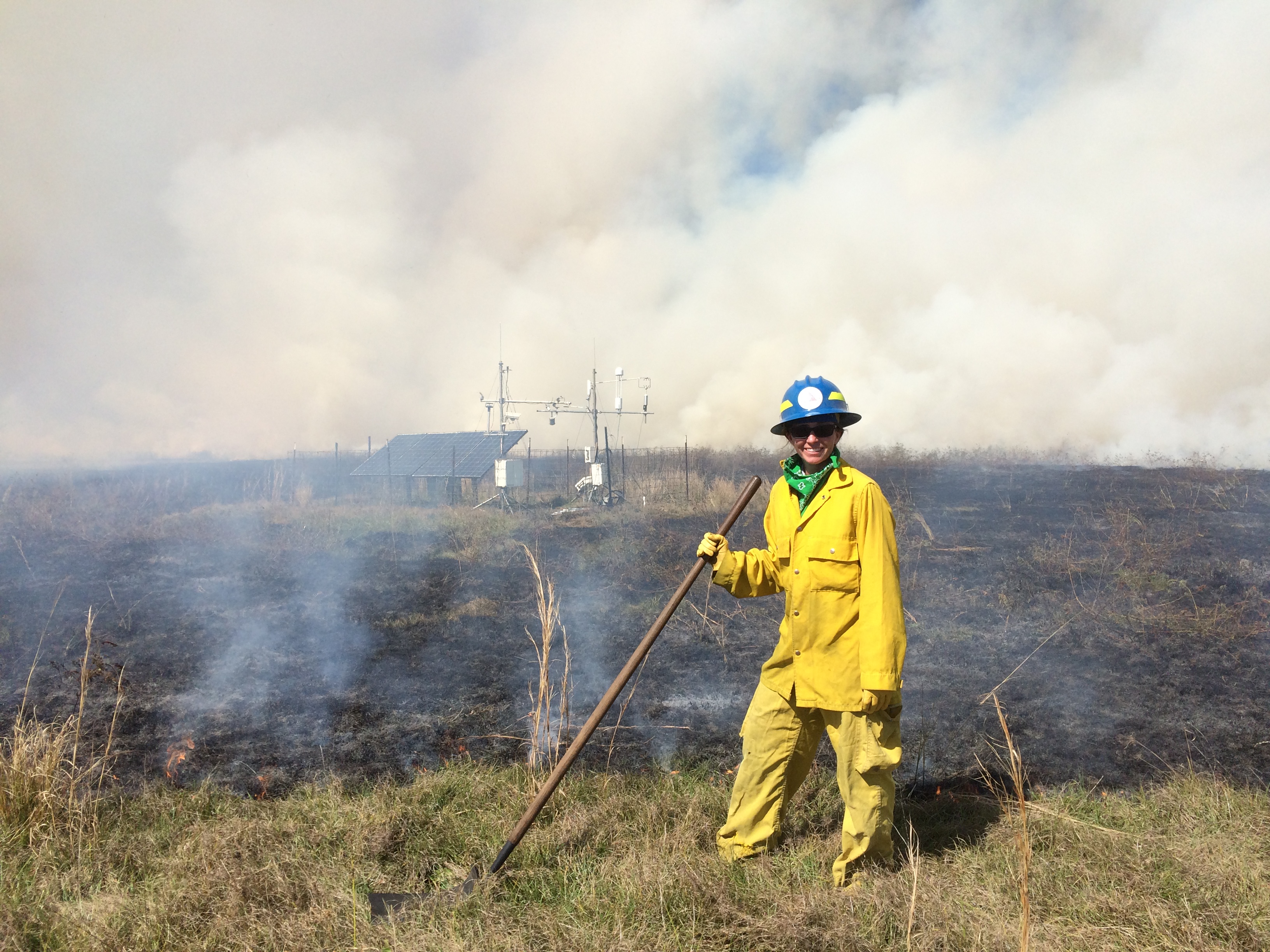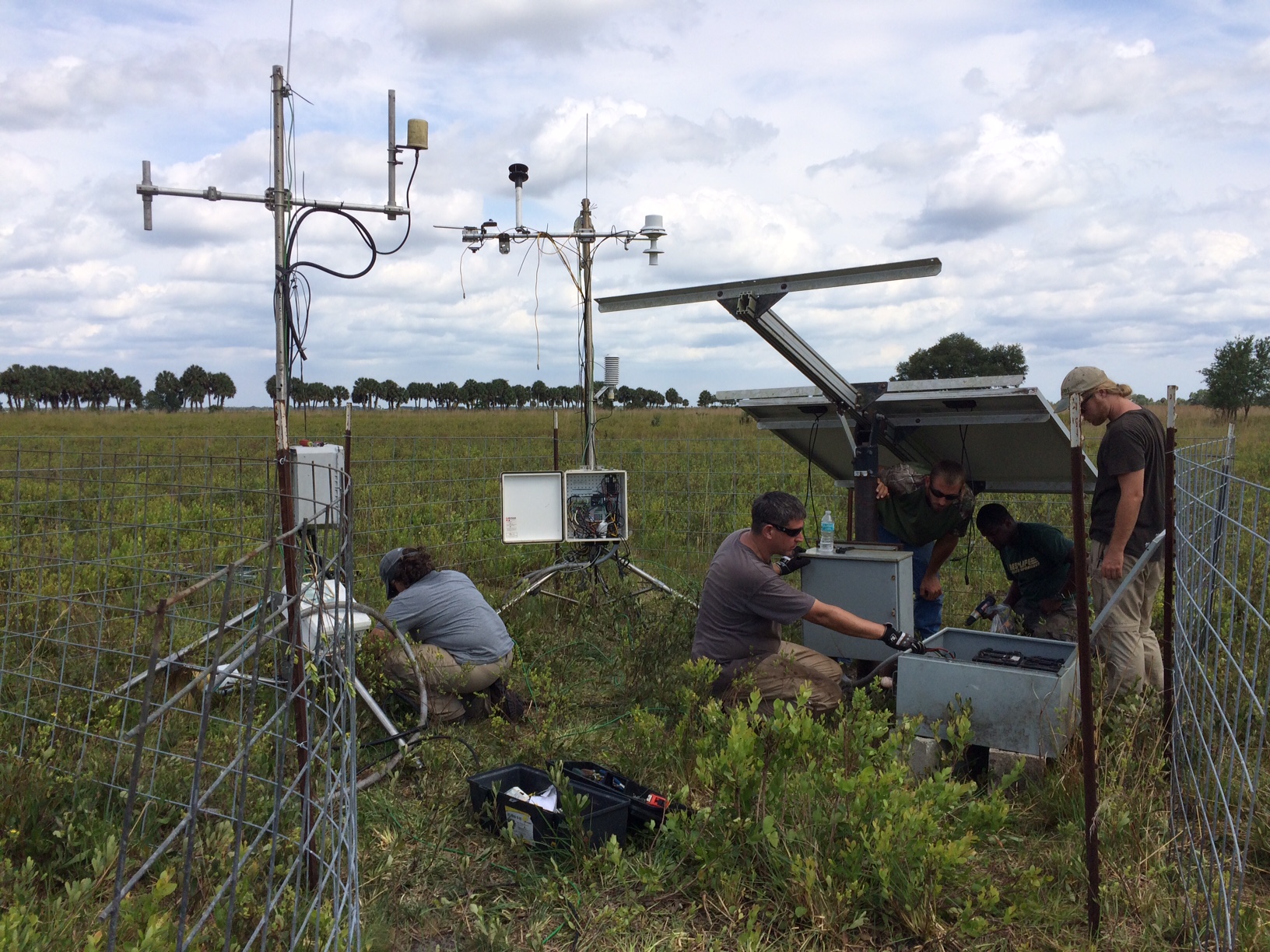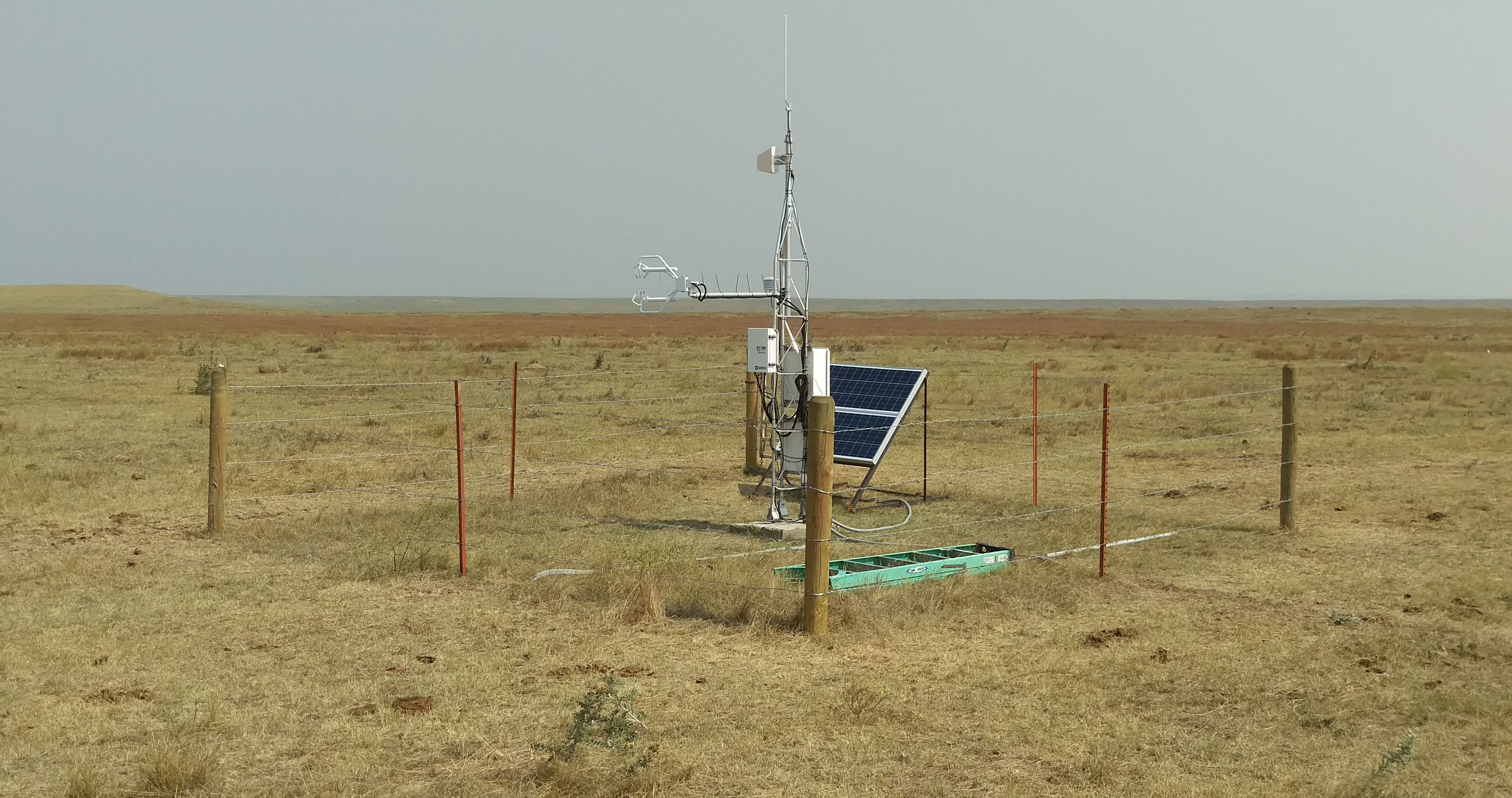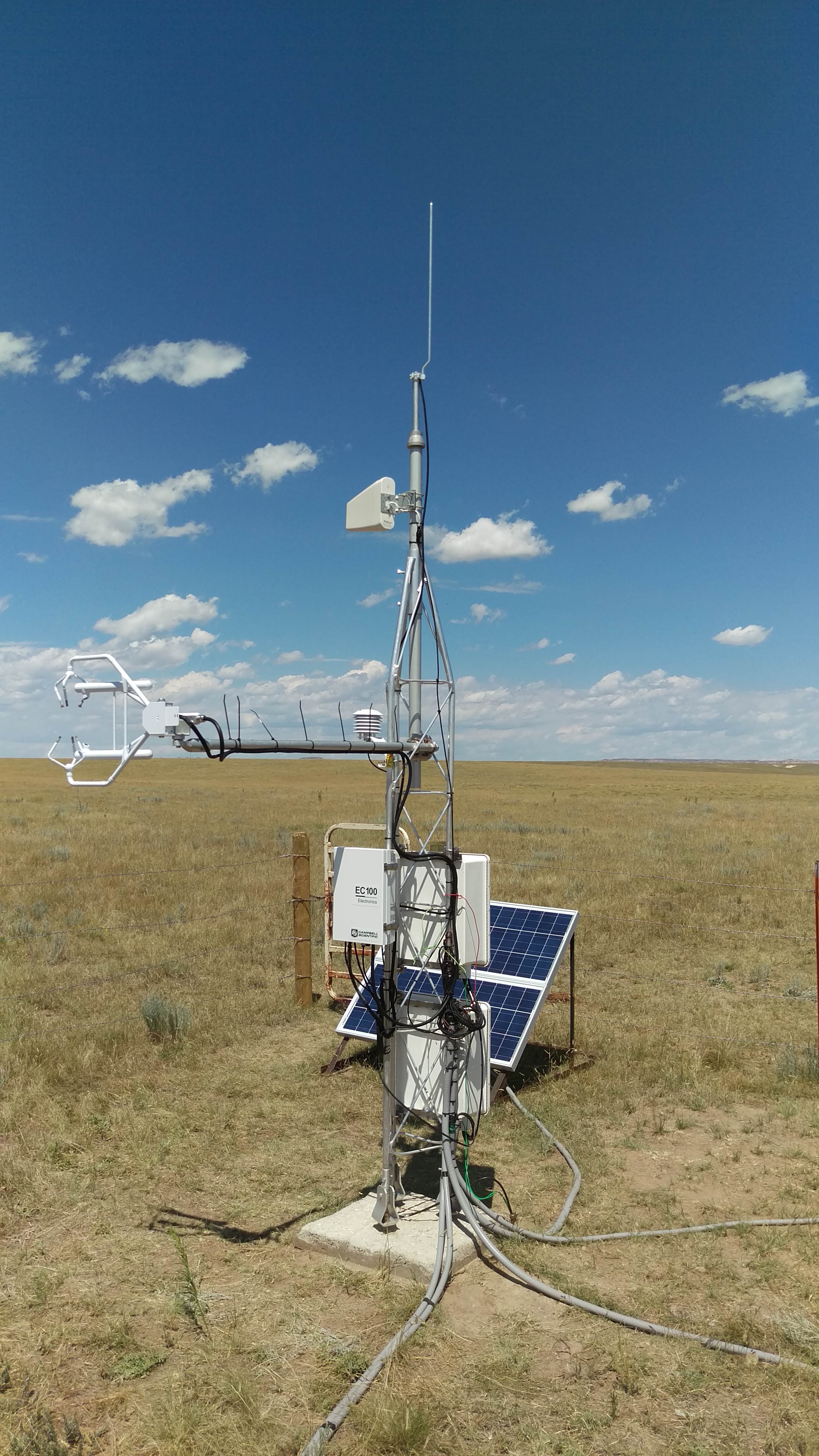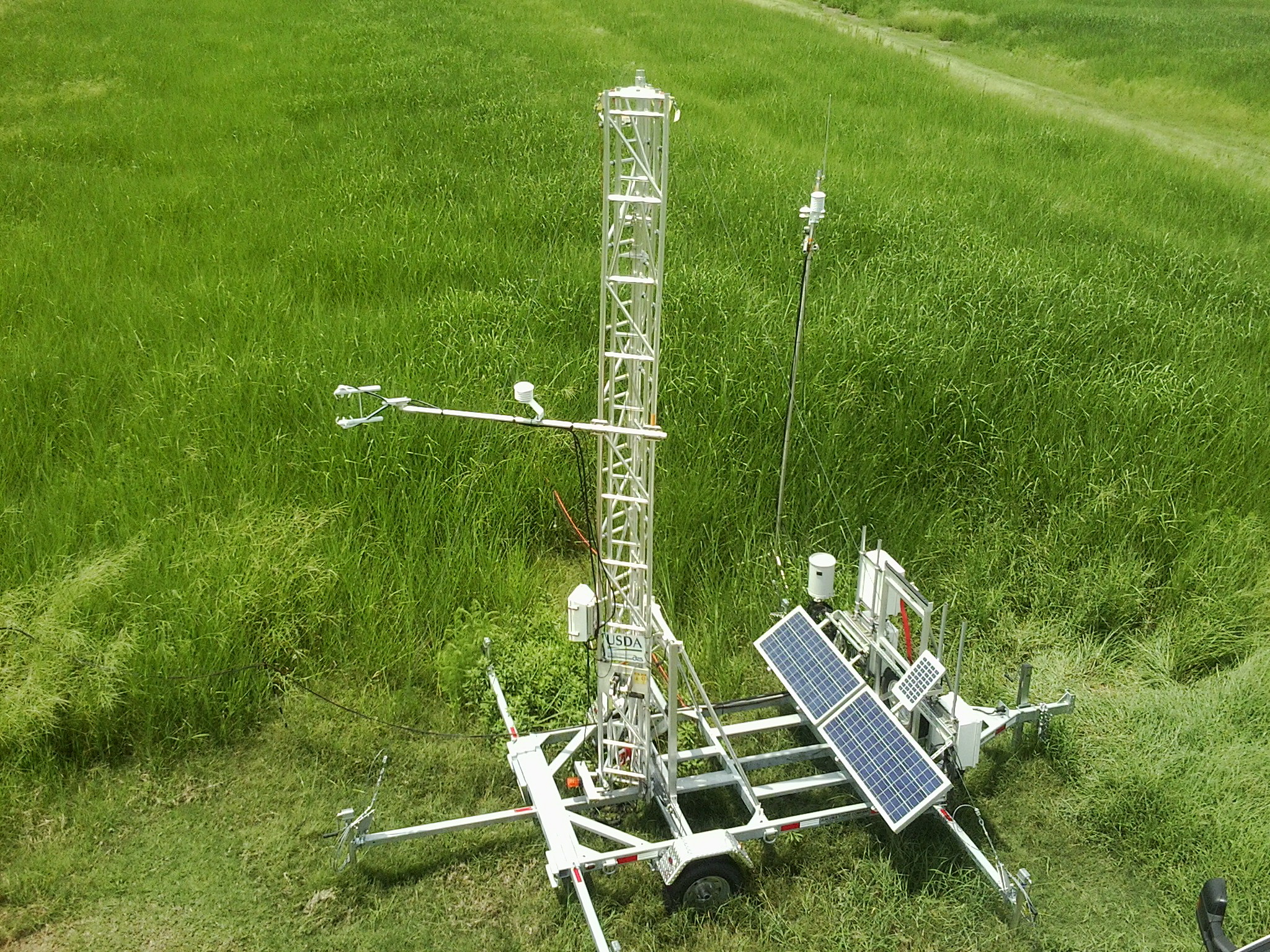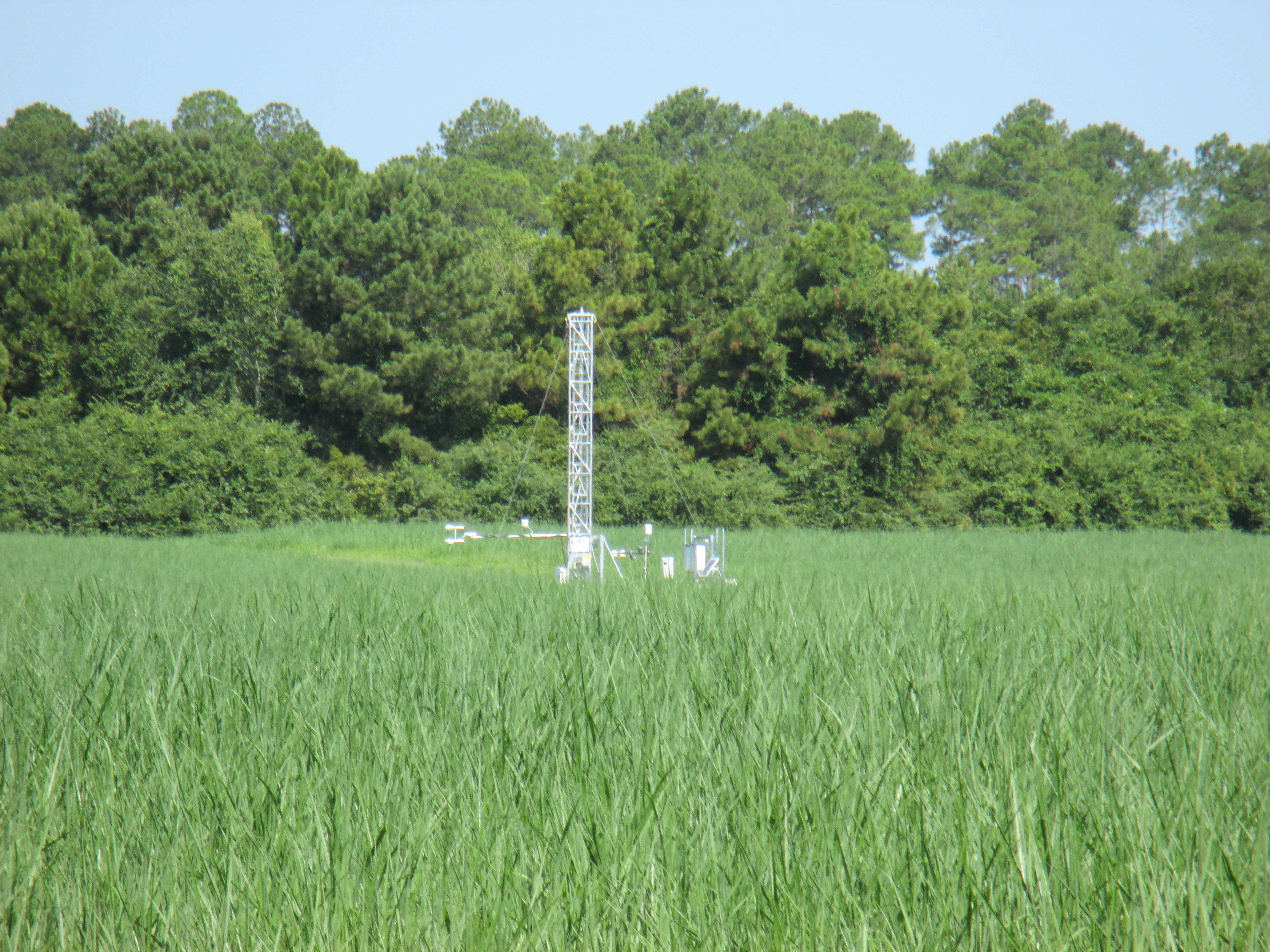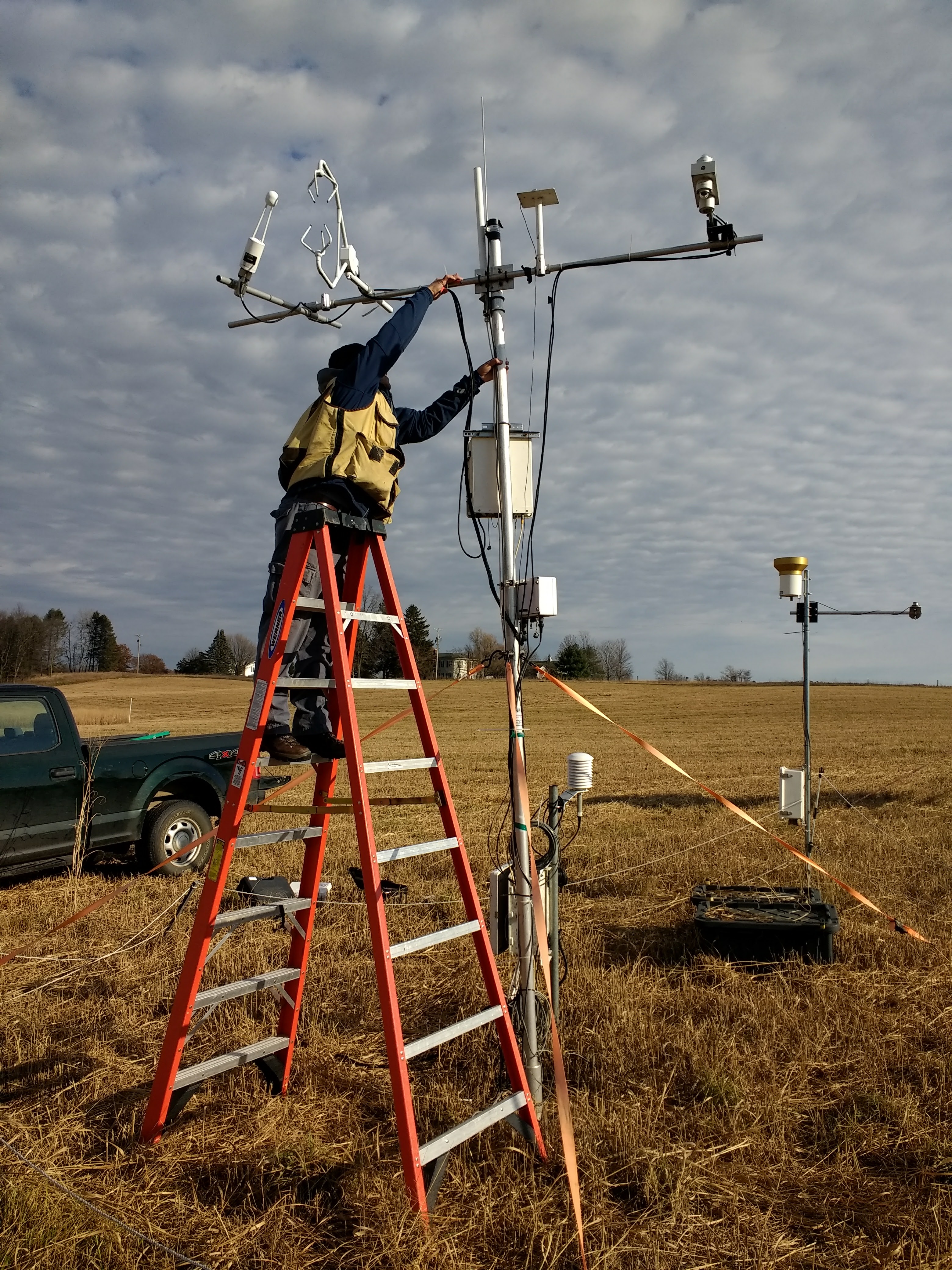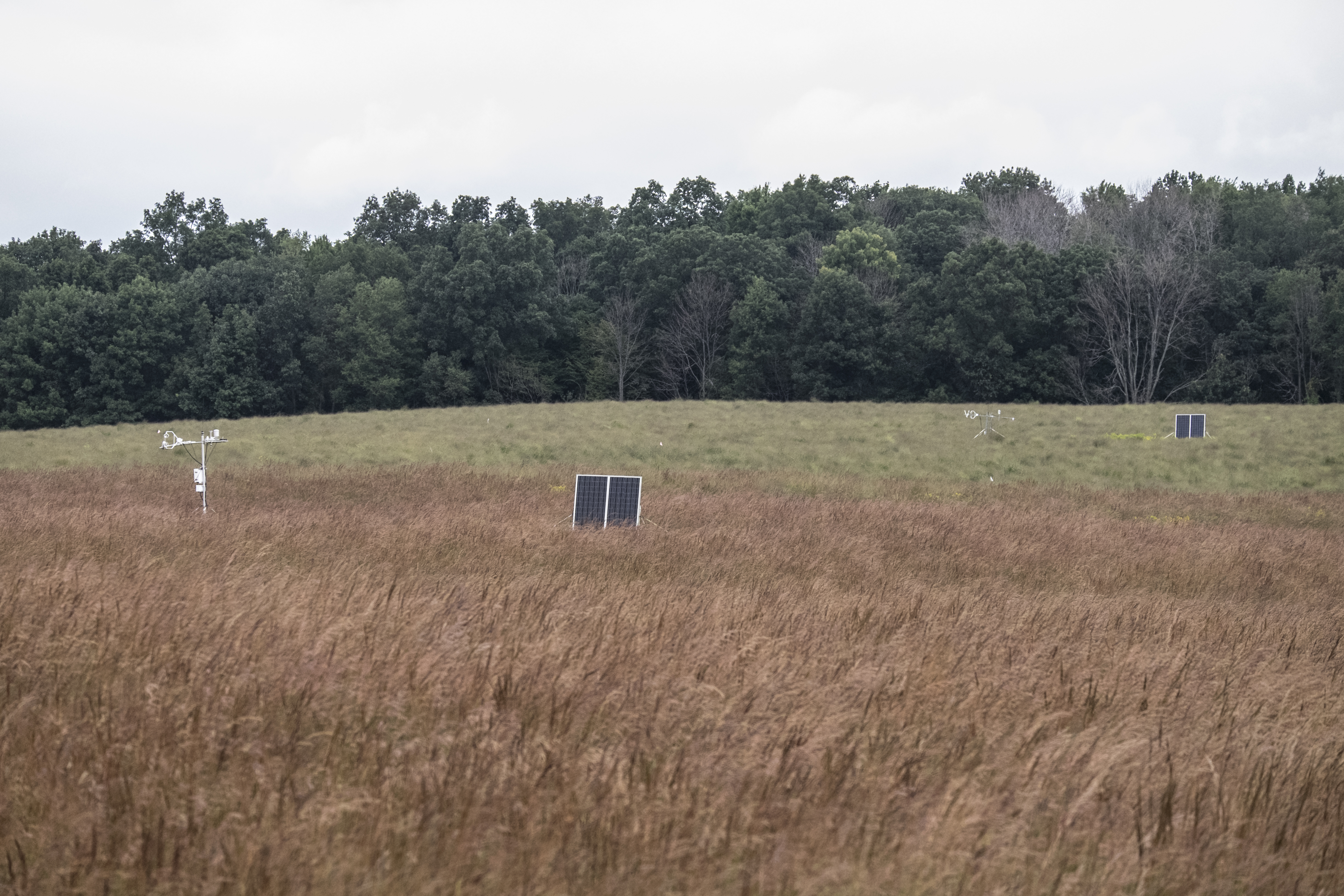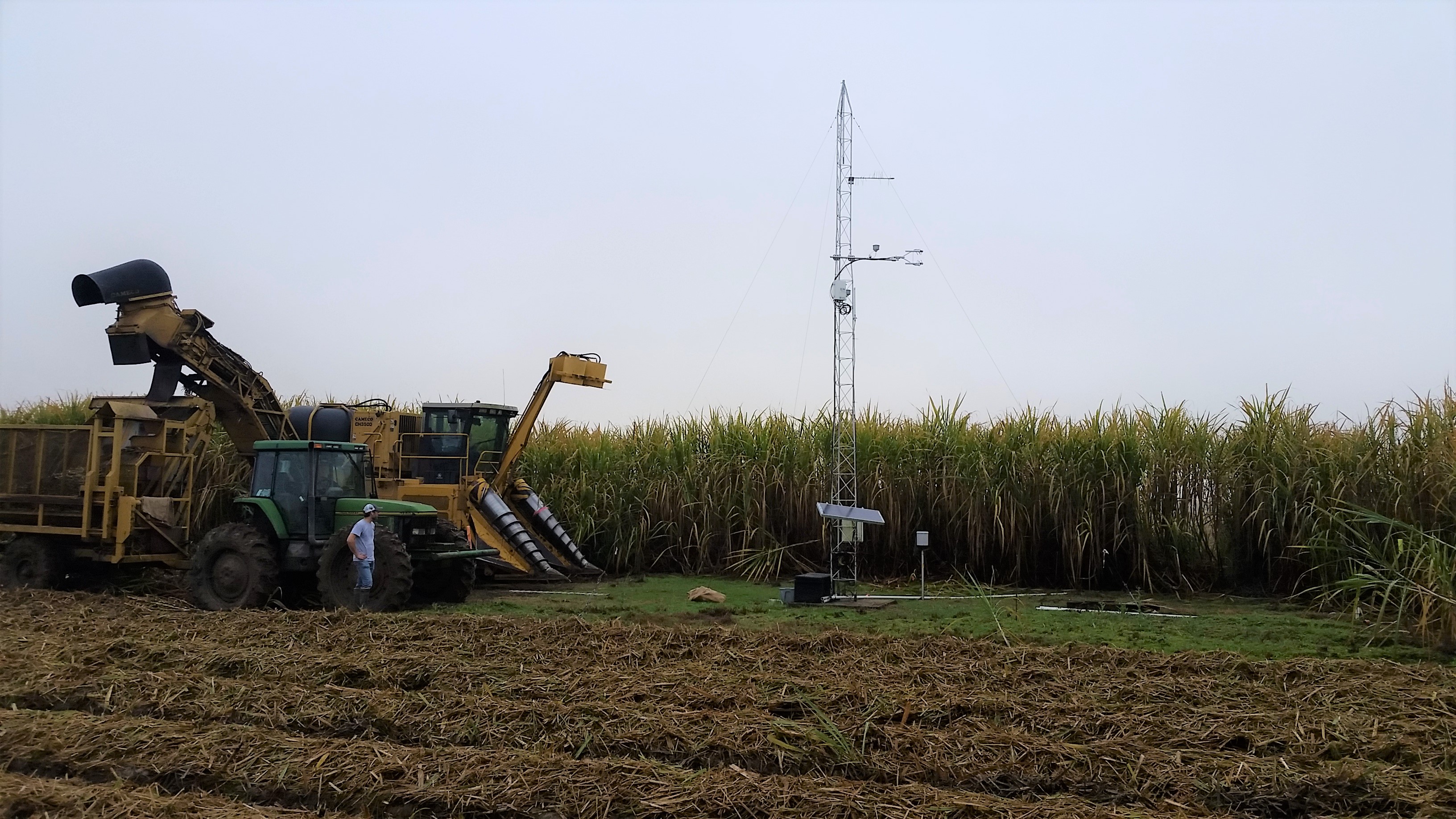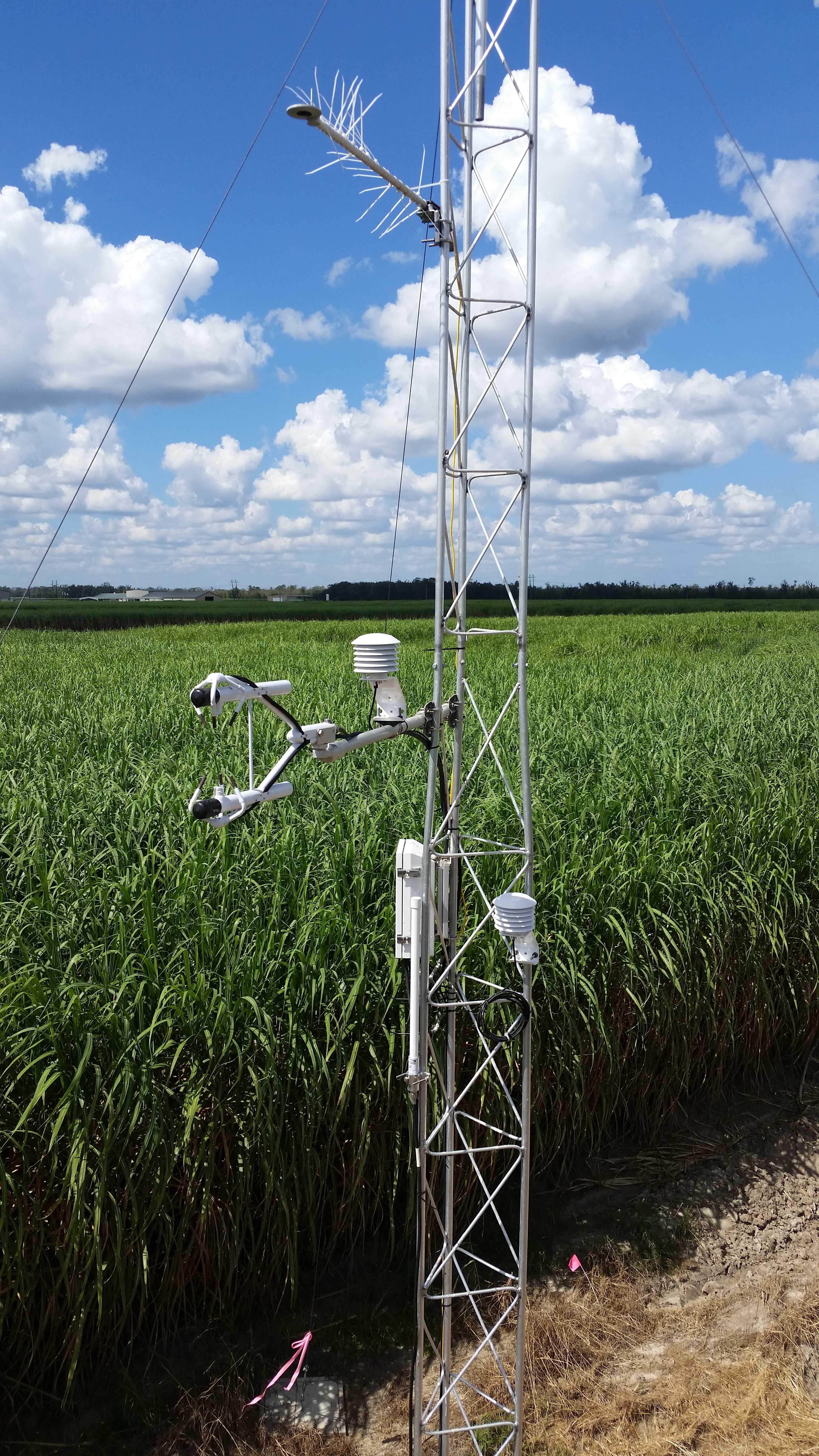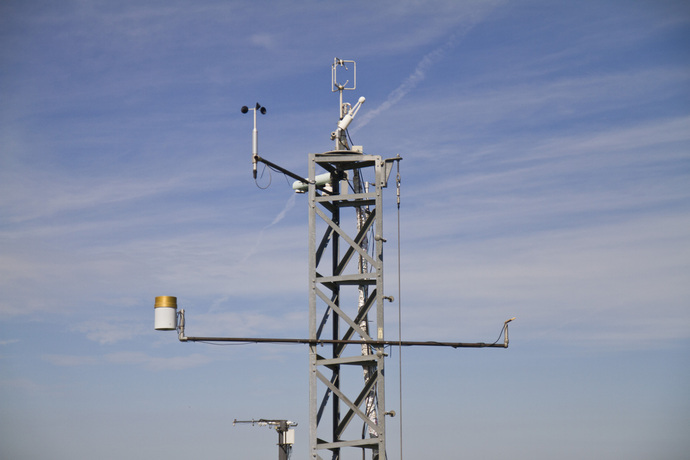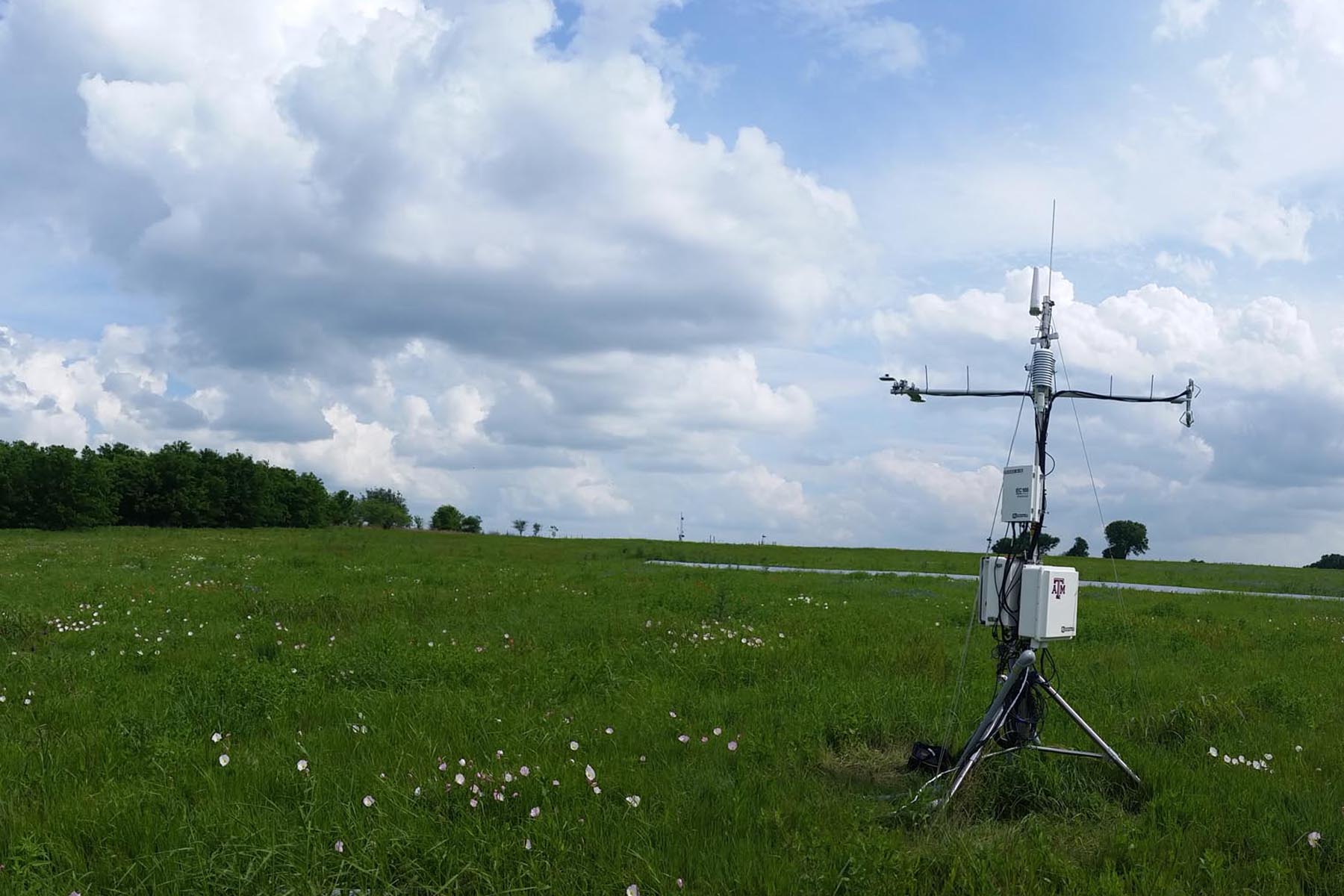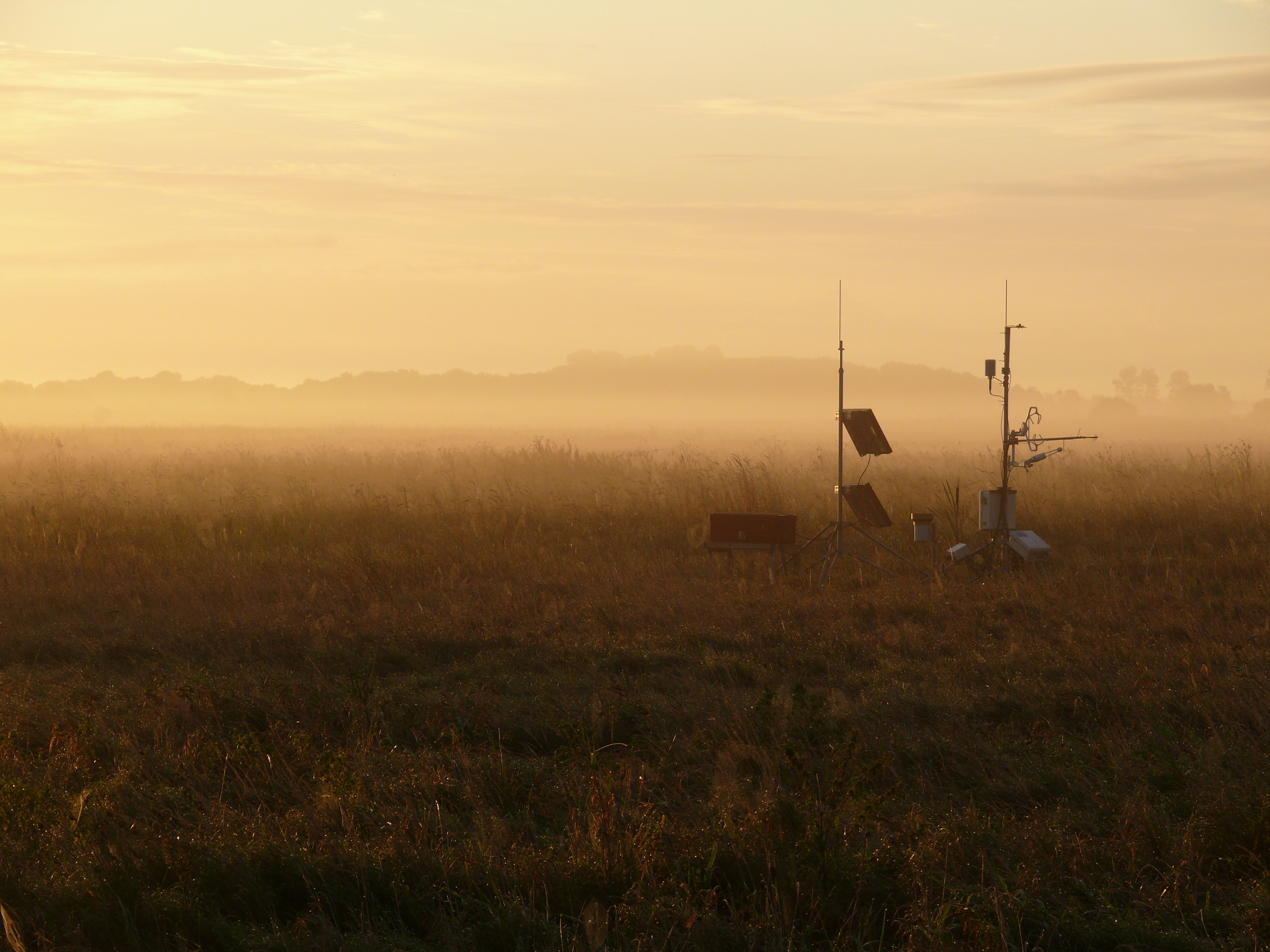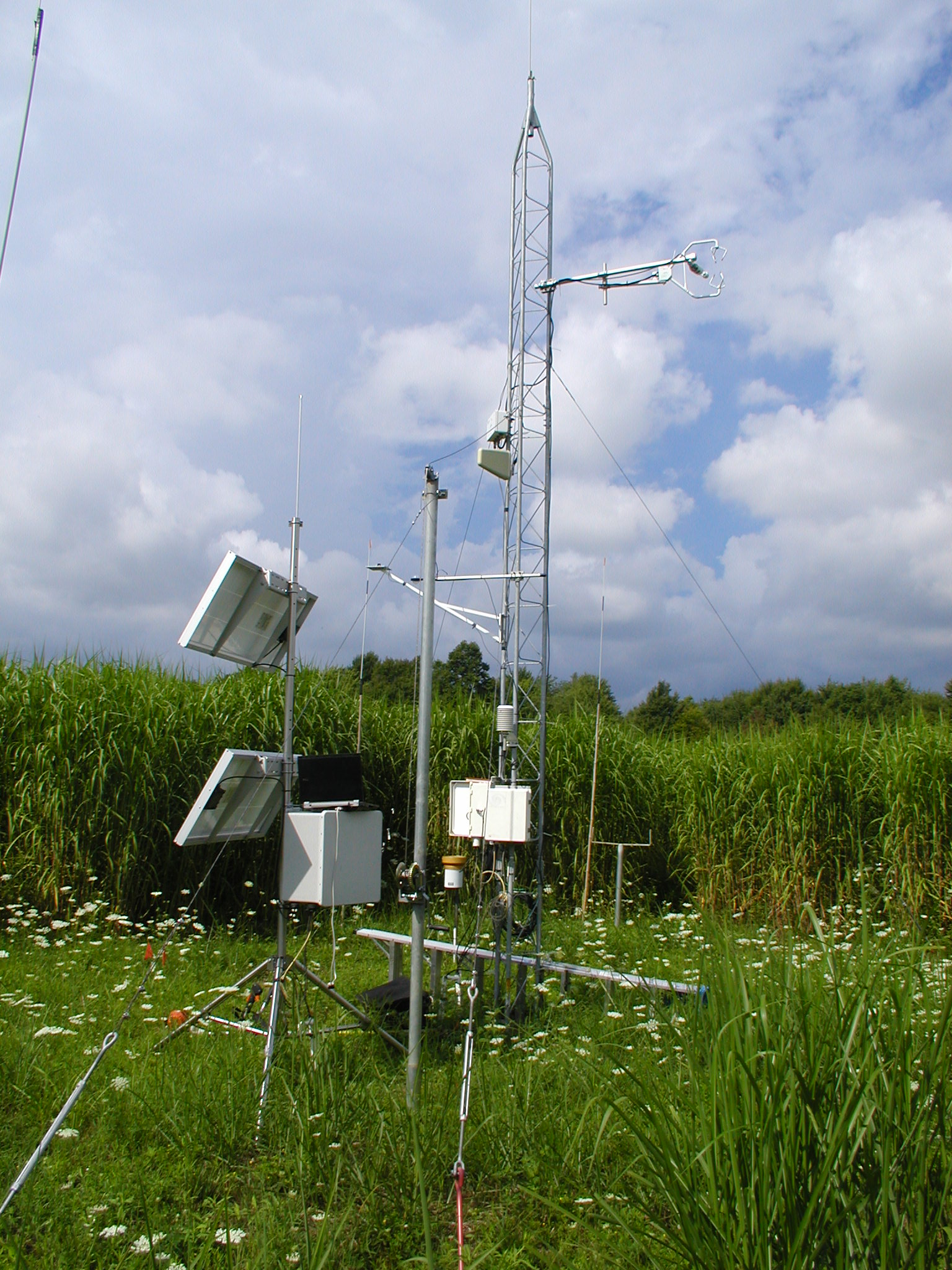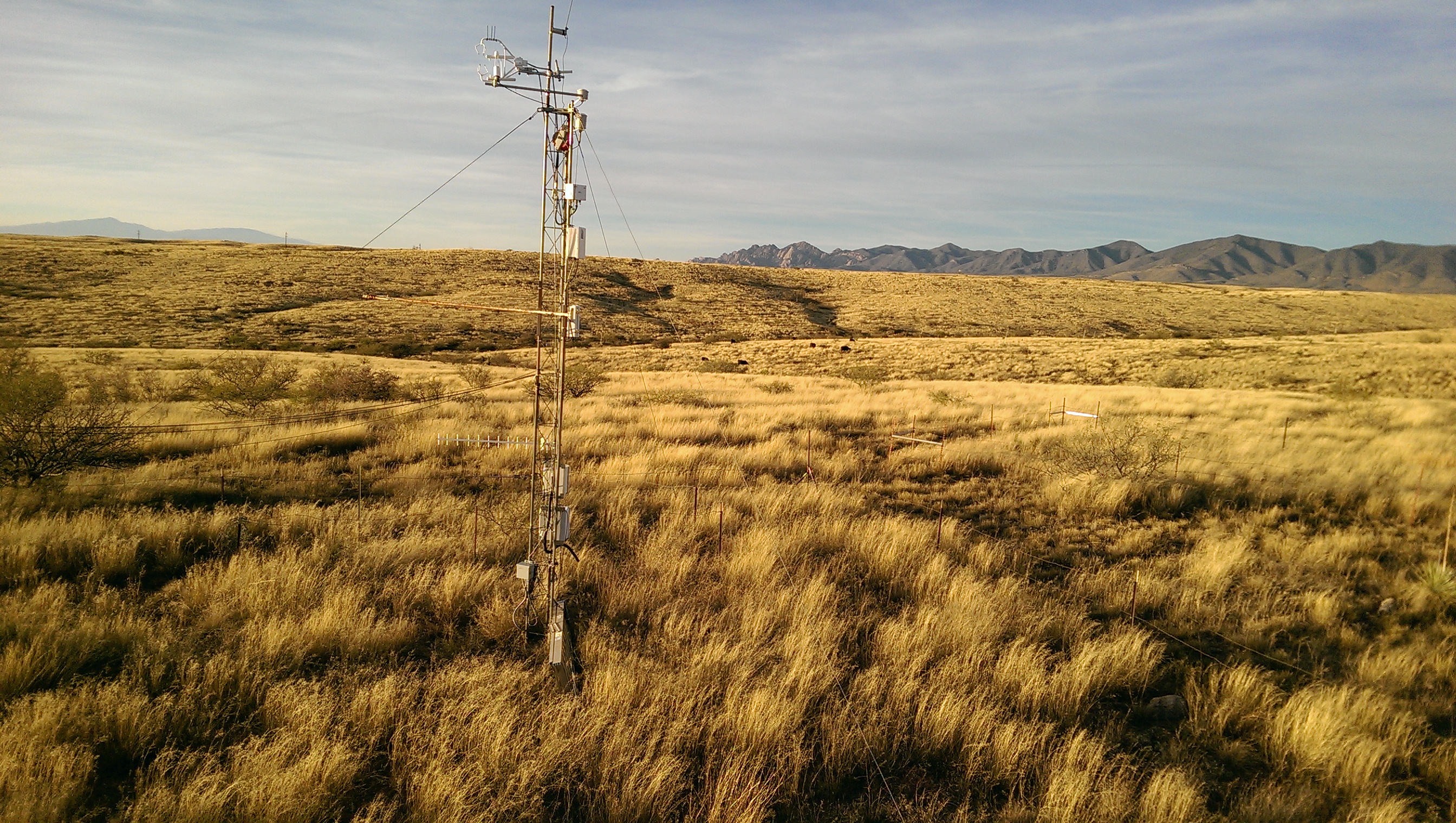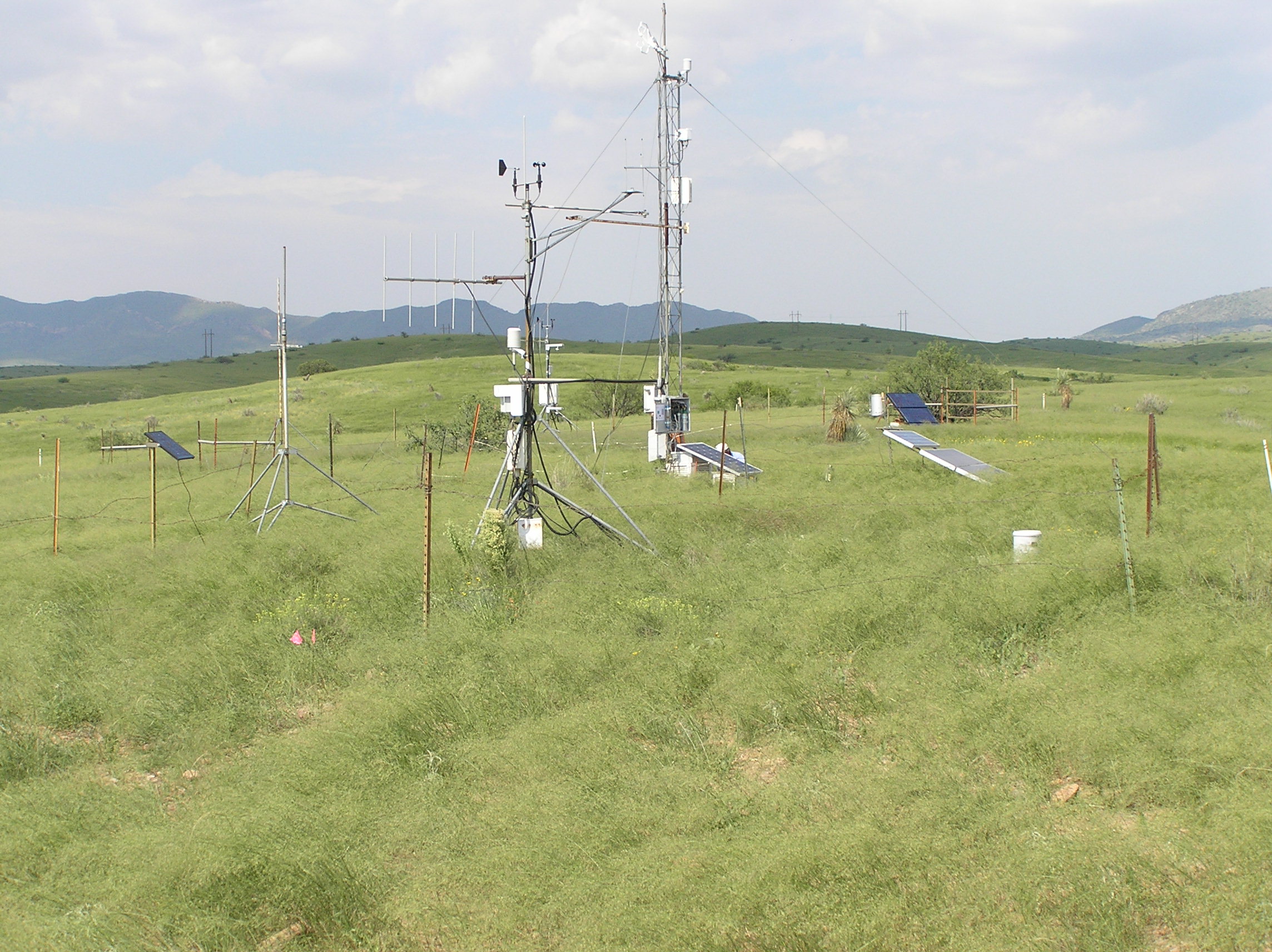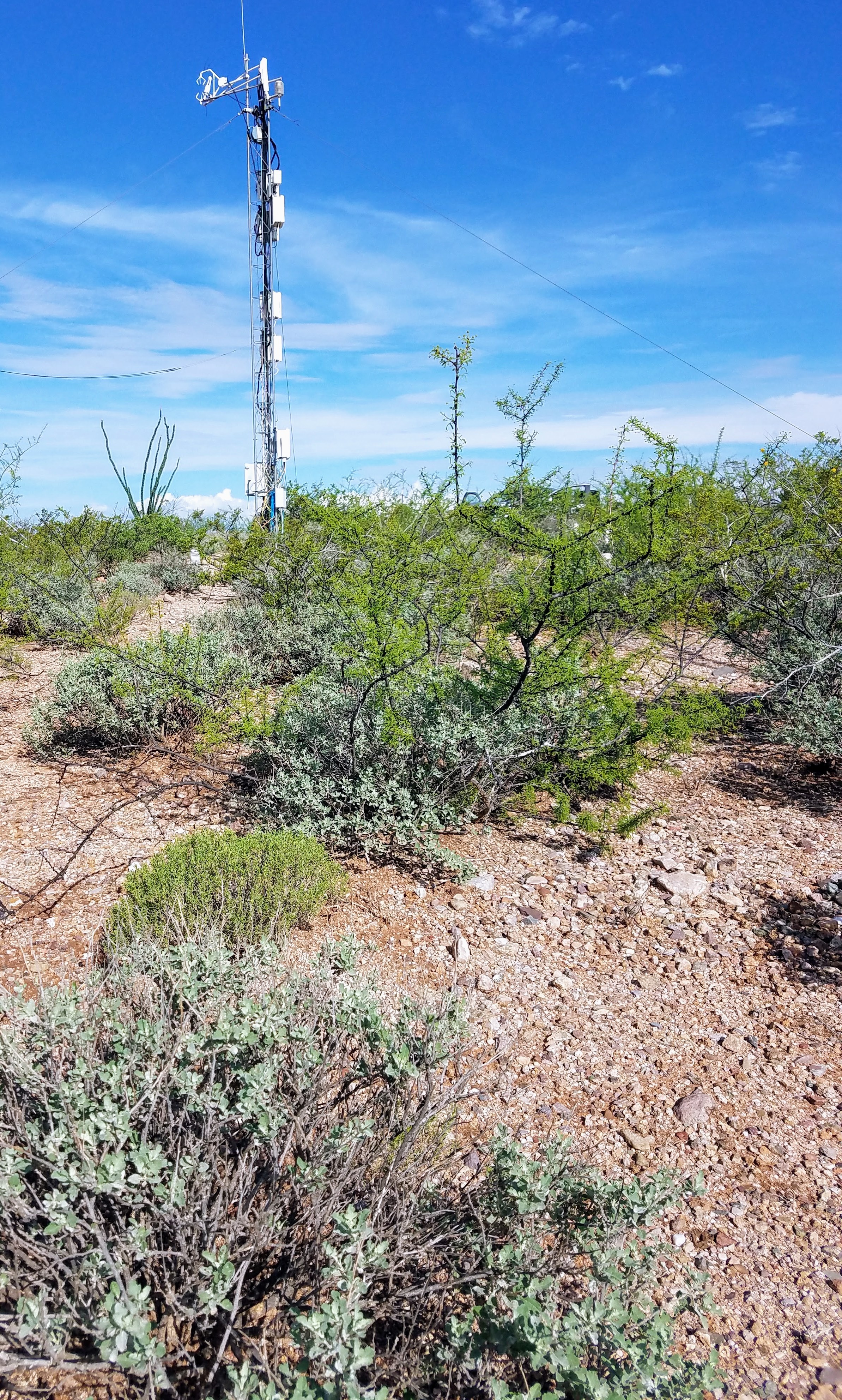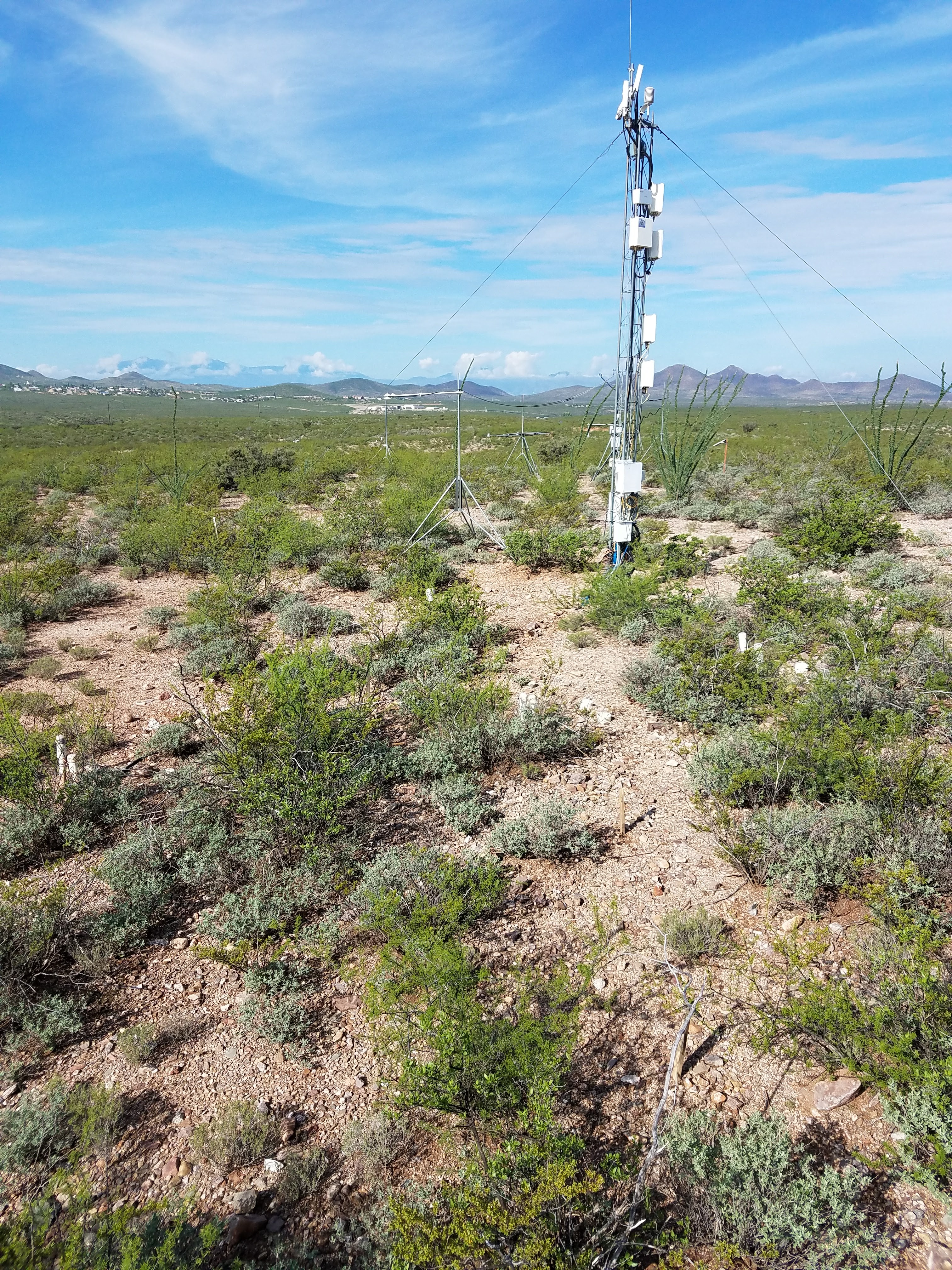Eddy Covariance/Surface Flux
Working GroupMission/Vision
To identify an appropriate set of sensors and procedures for collecting and processing the data needed to measure both the surface fluxes (heat, moisture, carbon dioxide, and momentum) and associated meteorological and surface properties to ensure consistent high-quality data across the LTAR network.
Objectives
- To provide a shared set of core measurements using a common format from all LTAR sites available to the public through the LTAR repository.
- To ensure comparability of the core data across the network by ensuring that the instrumentation and techniques are appropriate and equivalent to the extent this is feasible across all LTAR sites.
- To accommodate the varying capabilities and build skills at the LTAR sites by providing guidance and other resources for the proper collection and processing of data.
- To maintain continuity for observations that extend historical records.
Activities
- Develop procedures and timetable for transferring both the raw high-frequency and processed data to the NAL repository.
- Determine how legacy data for LTAR sites will be tabulated and shared through the NAL repository.
- Begin transmission of legacy data and its documentation to NAL
- Investigated connection and cooperation with DOE-Ameriflux program.
Accomplishments
Measurement and Post-Processing Protocols for Surface Flux Measurements
A document (LTAR_Surface_Fiux_Guidelines_0917.pdf) providing guidance for collecting and processing surface flux data was developed. Topics discussed in the guidelines include:
- A list of core measurements common to all LTAR sites
- A list of recommended instruments
- Recommendations for sensor deployment and maintenance
- Recommendations for data collection and processing
- Shared format for the metadata and data files.
Datasets Produced
Manuscripts Published
- Abraha M, Gelfand I, Hamilton SK, Shao C, Su Y-J, Robertson GP, Chen J. Ecosystem water-use efficiency of annual corn and perennial grasslands: contributions from land-use history and species composition. Ecosystems, 19, 1001–1012, 2016.
- Abraha M, Chen J, Chu H, Zenone T, John R, Su Y-J, Hamilton SK, Robertson GP. Evapotranspiration of annual and perennial biofuel crops in a variable climate. Global Change Biology Bioenergy, doi: 10.1111/gcbb.12239, 2015.
- Alfieri JG, Blanken PD, Morgan JA, Smith, DP Concerning the measurement and magnitude of heat, water vapor, and carbon dioxide exchange from a semiarid grassland. Journal of Applied Meteorology and Climatology, 48, 82-996, 2009.
- Alfieri JG, Prueger JH, Gish TJ, Kustas WP, McKee LG, Russ A. The effective evaluation height for flux-gradient relationships and its application to herbicide fluxes. Agricultural and Forest Meteorology, 232, 682-688, 2017.
- Baker, J.M., and T.J. Griffis. 2005. Examining Strategies to Improve the Carbon Balance of Corn/Soybean Agriculture using eddy covariance and mass balance techniques. Agric. Forest Meteorol. 128:163-177.
- Baker, J.M., and T.J. Griffis. 2009. Evaluating the potential of winter cover crops in corn-soybean systems for sustainable co-production of food and fuel. Agric. Forest Meteorol. 149:2120-2132.
- Biederman JA, Scott RL, Goulden ML, Vargas R, Litvak ME, Kolb TE, Yepez EA, Oechel WC, Blanken PD, Bell TW, Garatuza-Payan J, Maurer GE, Dore S, Burns SP. Terrestrial carbon balance in a drier world: The effects of water availability In Southwestern North America, Global Change Biology, 22(5), 1867-1879, 2016.
- Bhardwaj AK., Zenone T, Jasrotia P, Robertson GP, Chen J, Hamilton SK. Water and energy footprints of bioenergy crop production on marginal lands. Global Change Biology Bioenergy 3, 208–222, 2011.
- Del Gross SJ, Parton WJ, Dermer JD, Chen M, Tucker CJ. Simple models to predict grassland ecosystem C exchange and actual evapotranspiration using NDVI and environmental variables. Agricultural and Forest Meteorology, 249, 1-10, 2018.
- Gelfand I, Zenone T, Jasrotia P, Chen J, Hamilton SK, Robertson GP. Carbon debt of Conservation Reserve Program (CRP) grasslands converted to bioenergy production. Proceedings of the National Academy of Sciences, 108, 13864–13869, 2011.
- Gilmanov TG, Morgan JA, Hanan NP, Wylie BK, Rajan N, Smith DP, Howard DM. Productivity and CO2 Exchange of Great Plains Ecoregions. I. Shortgrass Steppe: Flux Tower Estimates. Rangeland Ecology and Management, 70, 700-717, 2017.
- Gilmanov TG, Baker JM, Bernacchi CJ, Billesbach DP, Burba GG, Castro S, Chen J, Eugster W, Fischer ML, Gamon JA, Gebremedhin MT, Glenn AJ, Griffis TJ, Hatfield JL, Heuer MW, Howard DM, Leclerc MY, Loescher HW, Marloie O, Meyers TP, Phillips RL, Prueger JH, Skinner RH, Suyker AE, Tenuta M, Wylie BK. Productivity and carbon dioxide exchange of leguminous crops: estimates from flux tower measurements. Agronomy Journal 106, 545-559, 2014.
- Griffis, T.J., J.M. Baker, and J. Zhang. 2005. Seasonal dynamics of isotopic CO2 exchange in a C3/C4 managed ecosystem. Agric. Forest Meteorol. 132:1-19.
- Griffis, T.J., S.D. Sargent, J.M. Baker, X. Lee, B.D. Tanner, J. Greene, E. Swiatek, K.C. Billmark. 2008. Direct Measurement of Biosphere-Atmosphere Isotopic Exchange Using the Eddy Covariance Technique. JGR-Atmospheres. J. Geophys. Res., 113, D08304.
- Hamerlynck, EP, Scott RL, Sánchez-Cañete EP, Barron-Gafford, GA. Nocturnal soil CO2 uptake and its relationship to subsurface soil and ecosystem carbon fluxes in a Chihuahuan desert shrubland, Journal of Geophysical Research: Biogeosciences, 118, 1593-1603, 2013.
- Li F, Kustas WP, Anderson MC, Prueger JH, Scott R. Effect of remote sensing spatial resolution on interpreting tower-based flux observations, Remote Sensing of Environment, 112, 337-349, 2008.
- Moran M S, Hamerlynck EP, Scott, RL, Stone JJ, Holifield Collins CD, Keefer TO, Bryant R, DeYoung L, Nearing, GS, Sugg Z, Hymer DC. Hydrologic response to precipitation pulses under and between shrubs in the Chihuahuan Desert, Arizona, Water Resources Research, 46 (W10509), 2010.
- Moran M, Scott R, Keefer T, Emmerich W, Hernandez M, Nearing G, Paige G, Cosh M, O’Neill P. Partitioning evapotranspiration in semiarid grassland and shrubland ecosystems using time series of soil surface temperature. Agricultural and Forest Meteorology, 149, 59-72, 2009.
- Morgan JA, Parton W, Derner JD, Glimanov T, Smith, DP.Importance of early season conditions and grazing on carbon dioxide fluxes in Colorado shortgrass steppe. Rangeland Ecology and Management. 69:342-350, 2016.
- Parton W, Morgan JA, Smith DP, Del Grosso SJ, Prihodko L, Lecain DR, Kelly R. Impact of precipitation dynamics on net ecosystem exchange. Global Change Biology. 28:915-927, 2012.
- Runkle B, Rigby Jr JR, Reba ML, Anapalli SS, Bhattacharjee J, Krauss KW, Liang L, Locke MA, Novick K, Sui R, Suvocarev K, White Jr PM. Delta-Flux: An eddy covariance network for a climate-smart lower Mississippi basin. Agricultural and Environmental Letters. doi:10.2134/ael2017.01.0003, 2017.
- Scott RL, Biederman JA, Hamerlynck, EP, Barron-Gafford, G. The carbon balance pivot point of southwestern US semiarid ecosystems: Insights from the 21st century drought, Journal of Geophysical Research: Biogeosciences, 120, 2612-2624, 2015.
- Scott RL. Using watershed water balance to evaluate the accuracy of eddy covariance evaporation measurements for three semiarid ecosystems, Agricultural and Forest Meteorology, 150, 219-225, 2010.
- Scott RL, Huxman TE, Cable WL, Emmerich WE. Partitioning of evapotranspiration and its relation to carbon dioxide exchange in a Chihuahuan desert shrubland, Hydrological Processes, 20, 3227-3243, 2006.
- Skinner RH, Dell CJ. Comparing pasture C sequestration estimates from eddy covariance and soil cores. Agriculture Ecosystems and Environment, 199, 52-57, 2015.
- Skinner RH, Dell CJ. Yield and soil carbon sequestration in grazed pastures sown with two or five forage species. Crop Science, 56: 2035-2044, 2016.
- Skinner RH, Goslee SC. Defoliation effects on pasture photosynthesis and respiration. Crop Yield, 56, 2045-2053, 2016.
- Sun L, Anderson MC, Gao F, Hain C, Alfieri JG, Sharif A, McCarty, GW, Yang Y, Yang Y, Kustas WP, McKee LG Investigating water use over the Choptank River Watershed using a multi-satellite data fusion approach Water Resources Research, 2017.
- Watts CJ, Scott RL, Garatuza-Payan J, Rodriguez JC, Prueger, JH, Kustas WP, Douglas M. Changes in vegetation condition and surface fluxes during NAME 2004, Journal of Climate, 20(9), 1810-1820, 2007.
- Wolf S, Keenan TF, Fisher JB, Baldocchi DD, Desai AR, Richardson AD, Scott R, Law BE, Litvak ME, Brunsell, NA, Peters W, van der Laan-Luijkx IT. Warm spring reduced carbon cycle impact of the 2012 US summer drought, Proceedings of the National Academy of Sciences, 113, 5880-5885, 2016.
- Wood, J.D., T.J. Griffis, J.M. Baker, C. Frankenburg, M. Verma, and K. Yuen. 2017. Multi-scale analyses reveal robust relations between solar induced fluorescence and gross primary production. Geophy. Res. Letters. 44:533-541.
- Zenone T, Gelfand I, Chen J, Hamilton SK, Robertson GP. From set-aside grassland to annual and perennial cellulosic biofuel crops: Effects of land use change on carbon balance. Agricultural Forest and Meteorology, 182-183, 1–12, 2013.
- Zenone T, Chen J, Deal MW. CO2 fluxes of transitional bioenergy crops: effect of land conversion during the first year of cultivation. Global Change Biology Bioenergy, 3, 401–412, 2013.
Working Group Name
Eddy Covariance/Surface Flux Working Group
Leader(s)
Adam Schreiner-McGraw
ABOUT LTAR
The USDA Agricultural Research Service (ARS) Long-Term Agroecosystem Research network consists of 18 Federal and university agricultural research sites with an average of over 50 years of history. The goal of this research network is to ensure sustained crop and livestock production and ecosystem services from agroecosystems, and to forecast and verify the effects of environmental trends, public policies, and emerging technologies.
